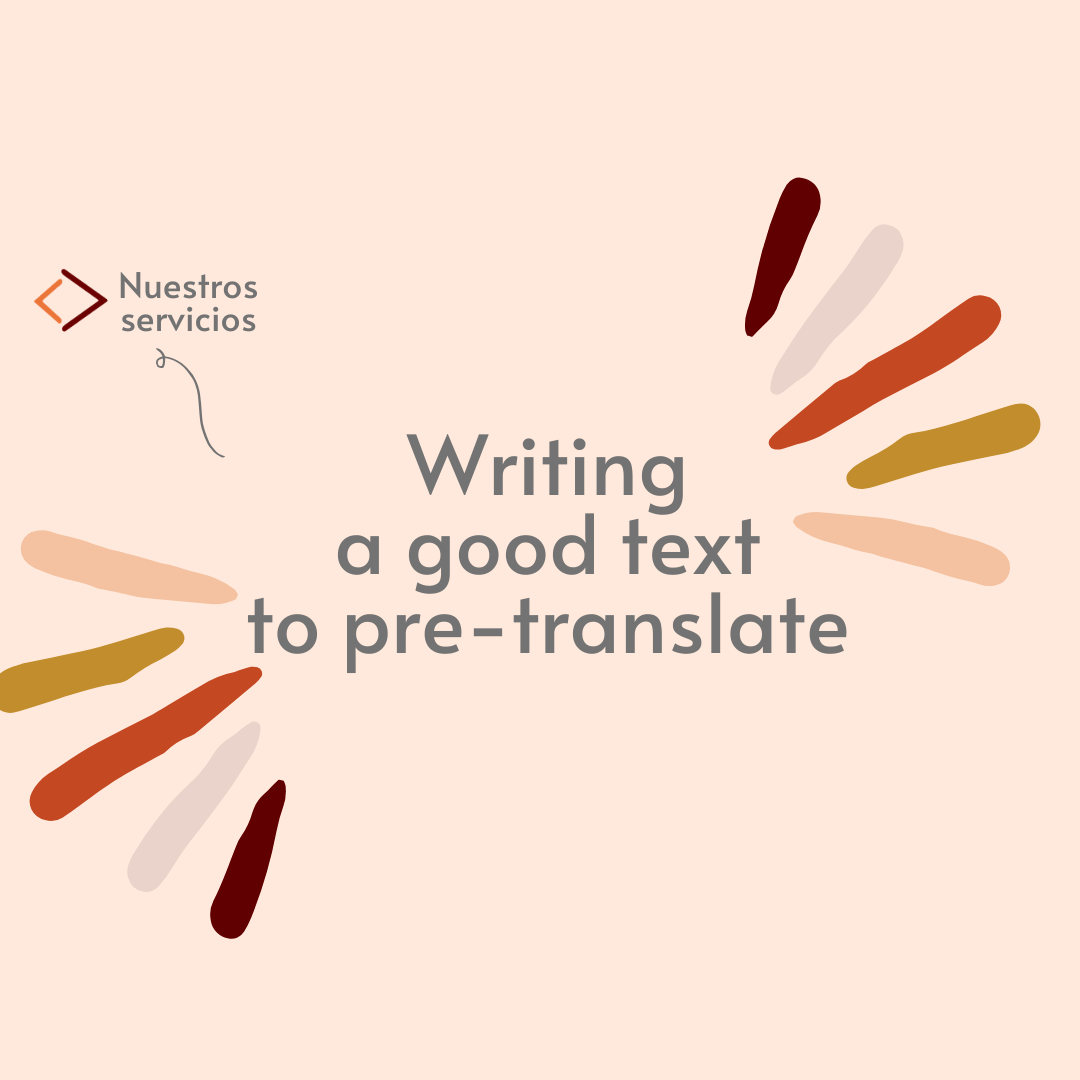As we mentioned in an earlier post, machine translation has come to stay. Although it is not recommended for all texts nor all goals, there are instances in which it is a good option both for the client and the translator (you can learn more about those cases in this post).
In those cases in which content is created to be pre-translated later by a machine translation engine, it is important to try and write quality and clear texts to make the post-editor’s task easier, to reduce costs (a badly-written text takes more time and it is usually more expensive), and to ensure content is understandable and free of meaning mistakes.
After working on many post-editing projects and determining which are the most common mistakes that engines make, we decided to outline some pieces of advice to write a text, or edit an existing text, to pre-translate it later with a machine and have it post-edited by a human translator.
Below, we share some advice on how to write clear texts having pre-translation in mind.
- Use simple and short sentences. The best option is for the sentence to have subject- verb-complement structure. In case the subject is not clear in the context, it is a good idea to include it explicitly in the sentence.
- Use commas. It is not the same to write “You always help” than “You, always help”. Sometimes, context can help us understand, but, when that is not the case, lack of commas or punctuation marks can lead to a serious meaning mistake that the translation engine would not detect.
- Do not forget accents. In Spanish, there are many words in which accents mark a difference in meaning, time or person. “Paso la carta por debajo de la puerta” (I slide the letter under the door) does not have the same subject as “pasó la carta por debajo de la puerta” (she/he slid the letter under the door). Besides, the difference between words such as “sí” (yes) and “si” (if) can change the meaning of the sentence. Therefore, it is important to use the accent so that the machine translation engine understands what we are talking about.
- Use all punctuation marks. It is important to differentiate a statement, a question or an exclamation, especially, when the structure in the sentence may be the same. Saying “we have the cake for the birthday” is not the same as saying “we have the cake for the birthday?”; not only does it change the meaning of the sentence, but it may also result in a birthday party without a cake. Remember that Spanish requires opening marks at the beginning of the sentence.
- Check spelling. Spelling mistakes may result in serious errors and change the meaning of the sentence. Before sending the text, we can use the spell-checking options of the tool we are using.
- Do not use idioms nor cultural references exclusive to the place. In the case of idioms, the machine translation engine will surely interpret them literally (“it’s raining cats and dogs” would be translated as if literal cats and dogs were falling from the sky, instead of using the appropriate idiom in the target language). Similarly, cultural references, except for those that are international or very well known, may be confusing for the machine translation engine or may require extra time, and cost more, for its adaptation.
- Send documents in a simple and editable format. Even if this is not strictly related to the writing of the text, simple texts (with no charts, pictures or columns) and editable formats (mainly, in a text processor format) prevent the machine translation engine from “being confused” o having to extract the text, which may cut the sentences in half, modify the meaning, or may leave some sections untranslated.
Although the professional who post-edits the text can solve many of these issues with context and their knowledge, there are instances in which there is no context or, even if there is, it is not very clear. Besides, do not forget that one of the main goals of using machine translation is making the process faster and the costs lower. The more mistakes the machine translation engine makes, the longest the time the human translator will need to correct them. Considering the above suggestions when writing a text that is thought-of for post-editing will contribute to the pre-translated text being of better quality and clearer, and it will make the post-editing task easier. This way, the post-editor will be able to devote their time and effort to have a quality final text, and the client will not have to work with longer deadlines nor will they have to invest more money in extra costs to “fix” the original text.



Recent Comments